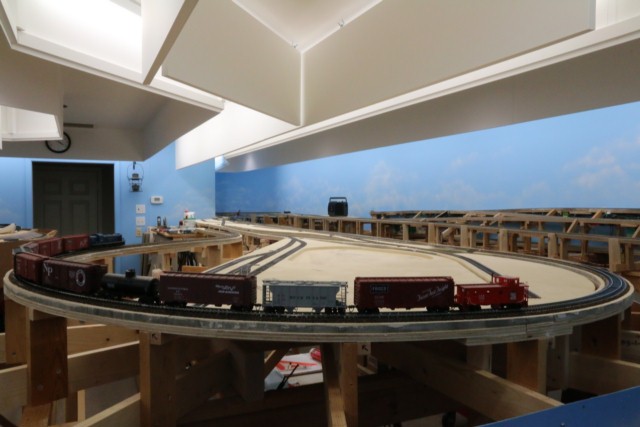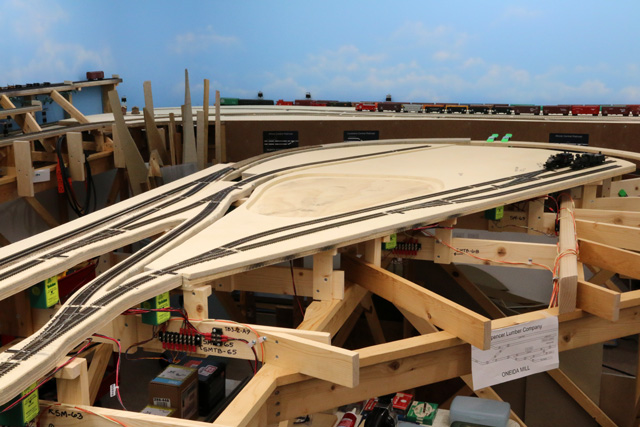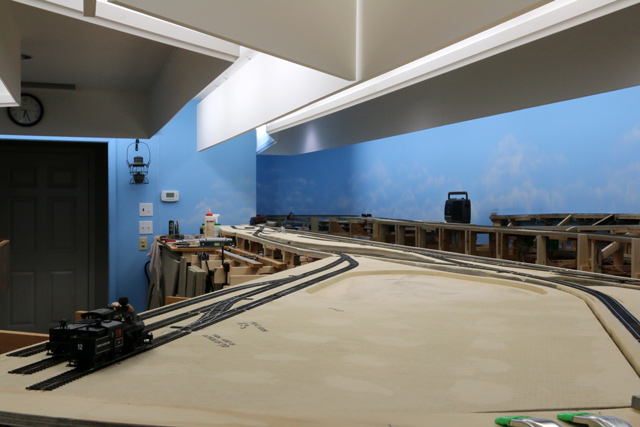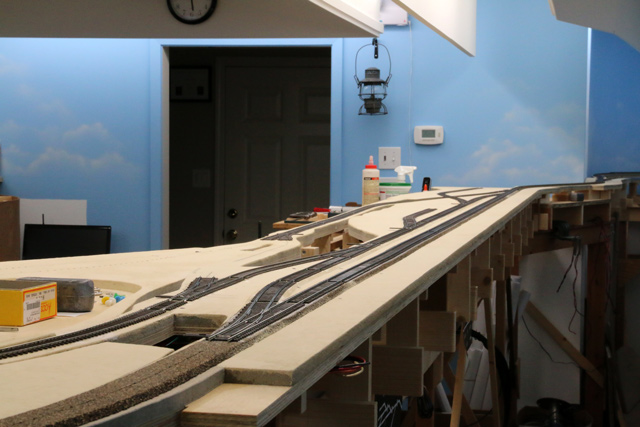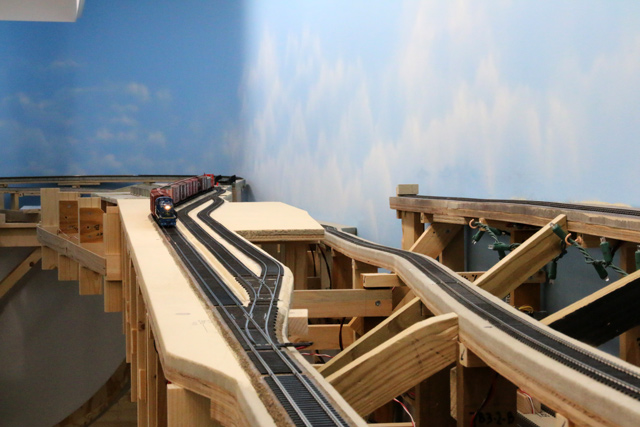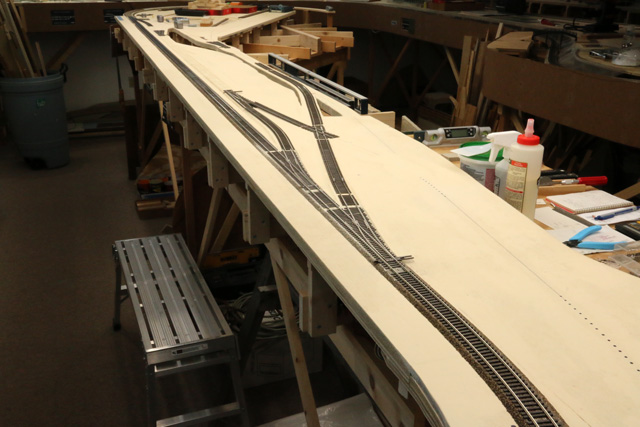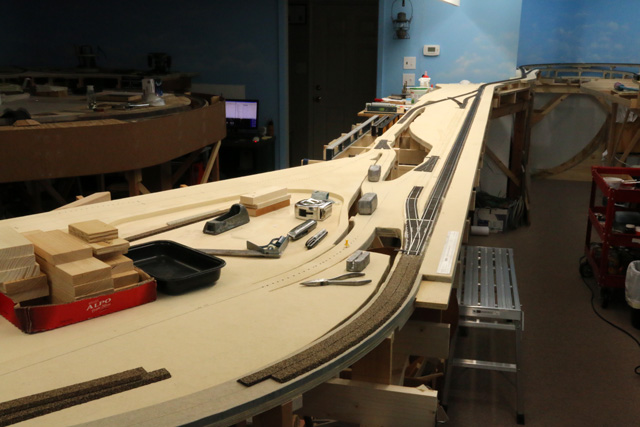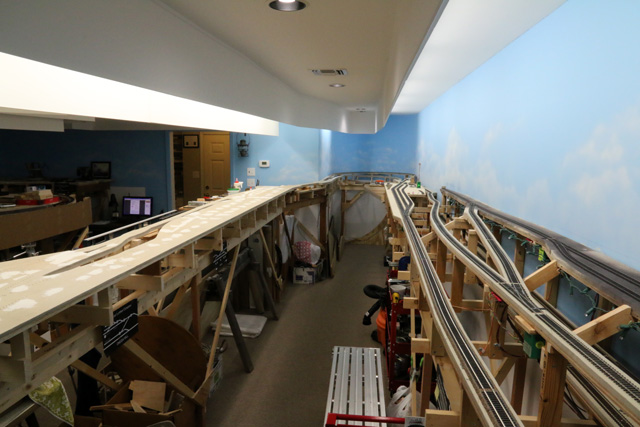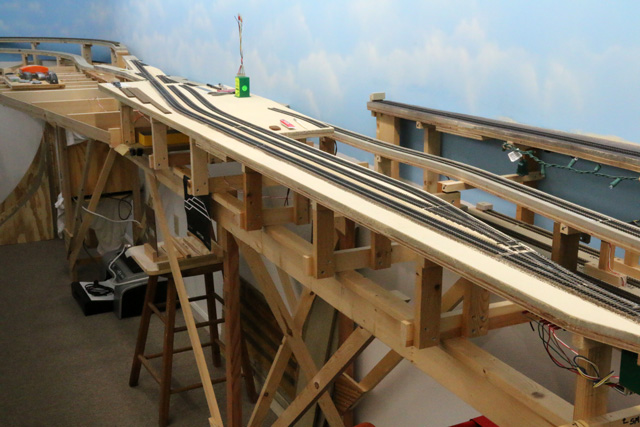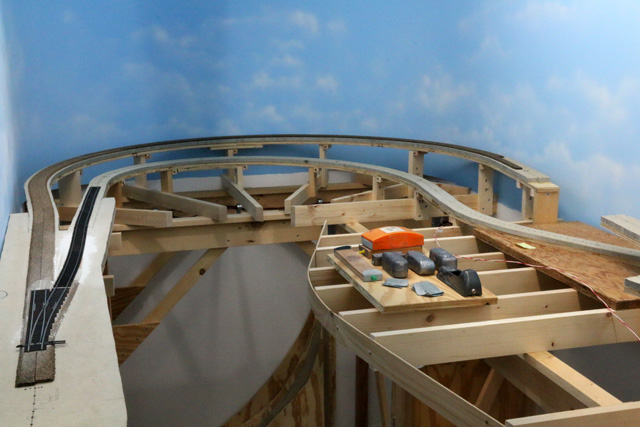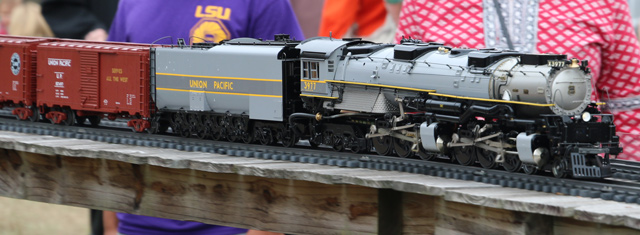It’s hard for me to believe that today marks the fourth anniversary of the Louisiana Central layout construction. No, it doesn’t seem as if I just started last year. But neither does it seem like four years!
I’m pleased to report that significant progress was made over the past year. To be sure, I went into full retirement last winter, so now have more time to spend on the construction. But I’ve also been in better spirits, and as a result, have been a bit more productive with the work.
If you’d like to follow along as I discuss the construction, you can click here to open a track plan in a new tab.
All three of the intermediate towns along the line (Oneida, Whitcomb and Maynard) are complete (with reference to roadbed, track and wiring). The only thing preventing them from full operation is the pending installation of the control panels so that the Tortoise switch motors can be controlled. The entire Spencer Lumber Company railroad operation has been completed. This includes the mill complex at Oneida, and all the way out to the re-load point up in the woods at Camp 6. Again, only the control panels need completion for operations to begin.
Indeed, the only Louisiana Central mainline trackage left to be laid is in the turn-back curve at the alcove, and about 30 feet of mainline west of Oneida, and in to Monterey. And that won’t be undone for long. I’m almost finished with the first 15 feet of roadbed out of Oneida and track should be going down on that next week. The hold up in the alcove is the small overpass bridge west of Whitcomb. The bridge itself is built, and I’ve started building the forms for the abutments and wing walls that I plan to cast in plaster. Once the bridge is installed, the mainline can proceed across, and around the curve in the alcove.
As a side note, the only downside to filling up all these areas with track has been the diminishing areas of storage for all of my clutter! But that’s a good price to pay.
The remaining un-laid trackwork is at each end of the layout. The yards at Willis and Monterey have to be constructed, and there is an industrial complex between those areas that must be done. And finally, there is the locomotive service area at Willis that must be installed. That will likely be the last trackwork to go in. Fortunately, the sub-roadbed for all of this trackwork is complete, and the track centers have been laid out. So it’s just a matter of putting down the track and installing the Tortoise switch motors. All of this trackage will be code 70, and I still have to modify about 25 more Shinohara switches for DCC compatibility.
And there is one more major thing that must be built: the bridge across the doorway into the room! This bridge is a few feet east of Monterey, and until it’s built, Monterey is isolated from the world. It’s not going to be just a narrow bridge with a strip of track. It will be a long timber trestle crossing a small spillway. Plans call for a bridge section nearly four feet long by one foot in width. The trestle will span most of that length. I feel that at least a 12″ width is needed to suggest the land and water that the trestle must span. I haven’t decided yet whether this bridge is going to swing down or lift up, but am favoring the lift up. This will be done similar to the pop-up that I built over in Monterey, but on a larger scale. I can’t swing the bridge up vertically, as it would hit the valance. Hence, the entire span must lift about two feet so that one can walk under it. I think that I’ll probably tackle this project this year so that I can complete the mainline. Wish me luck!
Any questions or comments about what I’ve done, or where I’m going? Shoot me your words . . . I’d love to hear ’em.
-Jack

